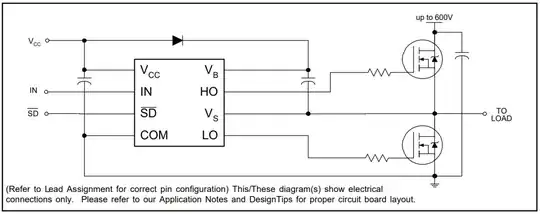The below diagram is from the first page of the Infineon IR2104 Half-Bridge Driver datasheet.
I have a Vbus that is also the power source for this IC (or I want it to be).
One presumes that the LO is driven by the Vcc from here and thus at high frequency this is ~ 2 A @ the gate voltage (GanFET in my case so about 6V)
This would be simple if my VBus was say 12V. But it it's ~ 100 V. (And once I get this working at lower voltage it may go higher)
I can't find any documentation on the suggested mechanism for getting Vcc from the VBus. And all of the test reference designs use a separate power supply for this and magically power it.
So what is the recommended, most efficient way to generate the Vcc from the VBus to power this?
